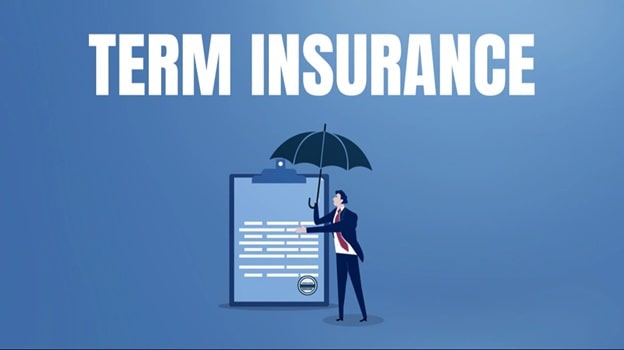Life is full of responsibilities, and making sure your loved ones are protected shouldn’t feel overwhelming. That’s where term insurance plans come in. Simple, affordable, and built to support your family when it matters most, they offer protection without adding financial pressure.
Whether you’re starting your career, planning for your family’s future, or thinking about long-term security, term insurance benefits give you the confidence that your dependents will be looked after, even if life takes an unexpected turn. With flexible options and added features tailored to different life stages, these plans are designed to meet both your needs and budget.

Why Term Insurance Makes Financial Sense?
Unlike traditional life insurance, which combines savings or investment elements, term insurance plans offer pure protection. You pay a nominal premium, and in return, your family gets a large sum assured if anything happens to you in a life-threatening way during the policy term. Here’s why it’s one of the smartest financial moves you can make:
- Low Premiums for High Coverage
- Multiple payout options (lump sum, staggered, monthly)
- Customisable riders like critical illness, disability, and accident cover
- Flexible premium payment modes (monthly, quarterly, yearly)
- Peace of mind for your family’s future
Increasingly, forward-looking plans, such as those offered by Aviva India, are also incorporating wellness-based features, including proactive health tracking tools, dietary guidance, and early illness detection support, designed to help individuals stay healthy while remaining insured. So if you’re looking for term insurance benefits that deliver real value, this might be the right place to begin.
Types of Term Insurance Plans
Not everyone needs the same type of cover. The right term insurance plan depends on where you are in life and what you can afford. Here are some common types of plans and who they may suit:
1. Level Term Plans
Best for: Salaried professionals and young earners
These are the most basic and affordable plans where the sum assured remains constant throughout the term. They’re ideal for those looking for high coverage at a low cost.
2. Return of Premium Plans (TROP)
Best for: Risk-averse individuals who prefer some returns
With TROP, your premiums are returned if you survive the policy term. While slightly more expensive, they offer peace of mind for those who want some benefit even without a claim.
3. Increasing Term Plans
Best for: Growing families or rising income levels
These plans allow the sum assured to increase annually, which helps you keep up with inflation and changing responsibilities.
4. Decreasing Term Plans
Best for: Loan protection
Ideal for covering home loans or personal loans. As the outstanding loan reduces, so does the sum assured, making it cost-effective.
5. Convertible Term Plans
Best for: Flexibility seekers
Start with a basic term plan and convert it to another type (like whole life) later, based on your changing financial needs.
Each of these term insurance plans can be tailored further using riders and premium payment choices, ensuring you don’t just buy a plan, but build a personalised protection strategy.
How Term Insurance Fits Every Budget?
One of the biggest term insurance benefits is its affordability. A 30-year-old non-smoker can get a cover of Rs. 1 crore for as little as Rs. 500–Rs. 800 per month. That’s often less than what you’d spend on streaming subscriptions.
Here’s how you can match a plan to your budget:
| Monthly Budget | Suggested Cover | Plan Type |
| Rs. 500–Rs. 1000 | Rs. 50L–Rs. 1 Cr | Level Term Plan |
| Rs. 1000–Rs. 2000 | Rs. 1 Cr–Rs. 1.5 Cr | Level Term or Increasing Term |
| Rs. 2000+ | Rs. 1.5 Cr–Rs. 2 Cr+ | TROP or Convertible Plan with Riders |
Remember, the younger and healthier you are, the lower your premiums.
Tax Benefits + Financial Safety
Meet Neha, a 28-year-old marketing professional earning Rs. 9 lakhs annually. She wanted to secure her parents and younger brother’s future, without disturbing her monthly expenses. Neha opted for a level term plan with Rs. 1 crore cover and a premium of Rs. 10,000 per year.
Let’s look at her situation:
Without Term Insurance
- Taxable income: Rs. 9,00,000
- Tax liability (approx.): Rs. 82,500
With Term Insurance (Section 80C deduction of Rs. 10,000 under the old tax regime)
- Taxable income: Rs. 8,90,000
- Tax liability (approx.): Rs. 80,100
- Tax saved: Rs. 2,400
While Rs. 2,400 may seem small annually, Neha also got peace of mind with Rs. 1 crore cover for her family and financial protection that would last 30 years. Over the long run, the savings plus insurance benefit is a win-win situation if you fall under the old tax regime.
What to Look for in a Term Insurance Plan?
Before selecting your plan, consider these checkpoints:
- Claim Settlement Ratio: A higher ratio means your insurer is trustworthy during critical times.
- Rider Availability: Select plans that offer add-ons such as critical illness, accidental death, or waiver of premium.
- Flexibility: Look for options to increase coverage, change payment frequency, or convert the policy.
- Insurer Credibility: Choose a reputable company with a strong track record.
For instance, Aviva India offers a range of term insurance plans tailored to your life stage and income, backed by a strong claim settlement history and customisable features. Whether you’re looking for a basic term cover or a 3D Term Plan with health-linked riders, Aviva helps you choose wisely and affordably.
Final Thoughts
Think of term insurance as your financial seatbelt. You may not need it every day, but when life takes a sharp turn, it’s the very thing that keeps your loved ones safe. And the best part? You don’t need to stretch your finances to get that protection.
From young professionals to parents and business owners, term insurance plans offer custom-fit protection, tax benefits under the old tax regime, and long-term peace of mind at a price that truly respects your budget.
So if you’ve been waiting for the “right time” to secure your family’s future, now is the time. After all, real financial freedom doesn’t come from what you earn. It comes from how well you protect it.

